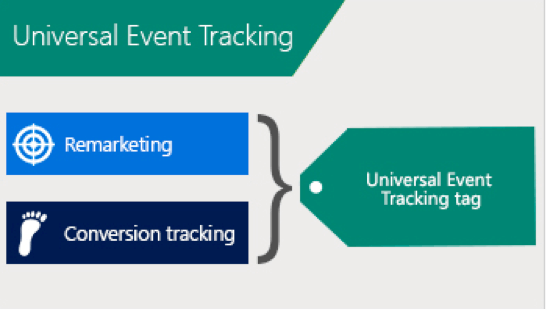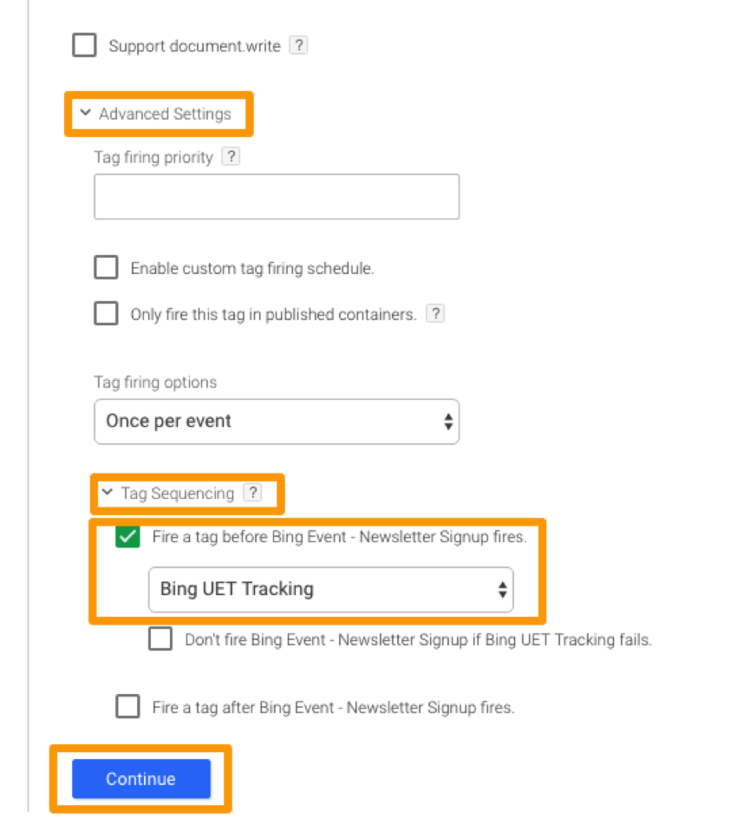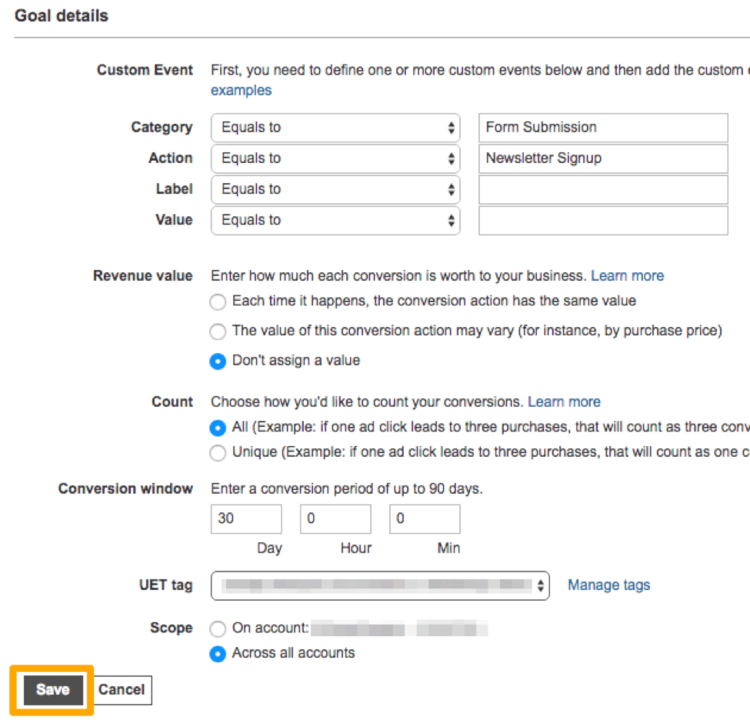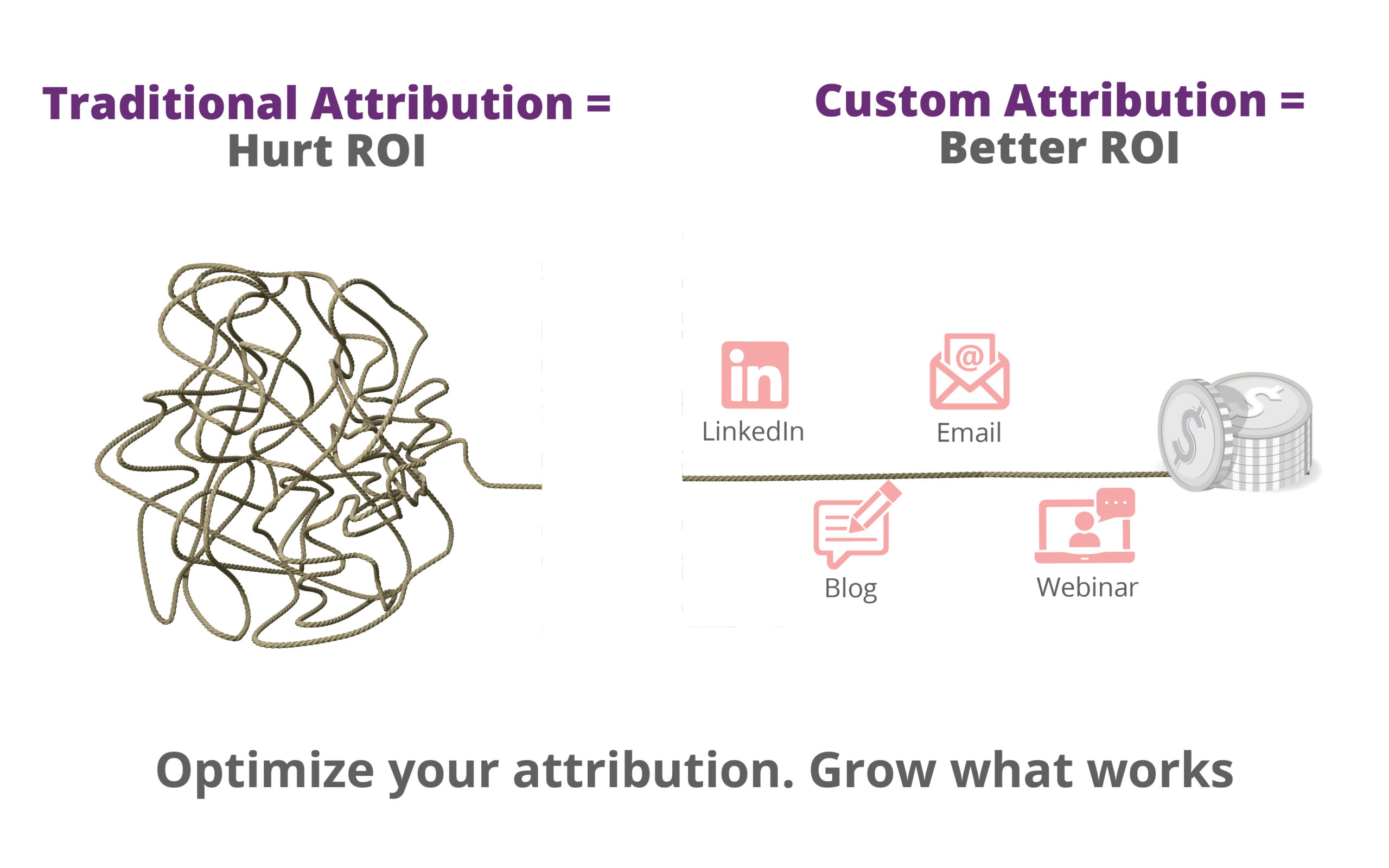Universal Event Tracking (UET) is a powerful tool that helps you track what your customers do after clicking on your ad. Not only does this arm you with an opportunity to have more oversight of where your customer is going but it also gives you the information you need to try to bring your customer back.
To be able to do this, you only have to create a single UET tag and insert it across your website and Bing Ads will do the rest. It will collect data allowing you to track conversion goals and build a targeted audience list for remarketing.
You only need to setup Google Tag Manager code once on the site and that’s it! Now you can use this free tool to set up every kind of tracking on your website. It is a great tool and apart from all the key features, it allows adding custom code on your site as well so that you can track almost anything just by setting up a few tags. Bing Ads is one of the tracking codes that can be setup on the site using GTM.
- What is Bing Ads UET Tag?
- Creating Bing UET Tag
- Setting up Bing UET Tag in GTM
- Bing Events
- What is Bing Ads Remarketing?
- Create a Remarketing List and Conversion using Bing Events
What is Bing Ads UET Tag?
It tracks what your customers are doing after they click on your ad. Universal Event Tracking (UET) is a powerful tool that records what customers do on your website. By creating one UET tag and placing it across your website, Bing Ads will collect data that allows you to track conversion goals and target audiences with remarketing lists -advertise.bingads.microsoft.com.
 Bing Universal Event Tracking
Bing Universal Event Tracking
In short, UET tags provide you essential data to help you improve ad performance on your website.
Creating Bing Ads UET Tag
It is easy to create a UET tag in Bing Ads. All you need is a name
 create UET tag
create UET tag
1. Within Bing ads portal Click the Campaigns page, and then on the left pane, click Conversion Tracking.
2. Under Conversion Tracking, click UET tags.
 create UET Tags
create UET Tags
Note: If this is the first time you are creating a tag, you can also click on Get Started in the Conversion Tracking page.Click
3. Create UET tag and then enter a name.
Optional: Enter a description that helps you identify the UET tag in the future. We recommend that you enter the website page name or URL.
4. Click Save.
5. In the View UET tag tracking code box, click either Copy, Download or Email, and then click Done.
 UET tag tracking code
UET tag tracking code
Setting up Bing Ads UET Tag in Google Tag Manager
Once you have created Bing UET Tag, setting it up using GTM is easy.
1. Create a NEW tag in GTM by clicking on the NEW button within the Tags section of your container.
 Create a new GTM tag
Create a new GTM tag
2. On the popup window, enter the title of the tag as “Bing UET Tracking”
3. Click on the tag configuration and select the tag type as “Bing Ads Universal Event Tracking”.
4. In the tag configuration menu, enter the UET tag id we created earlier, keep the UETQ variable as it is and select the event type as page load.

5. Click on the advanced options and set the tag firing option as “once per page”.

6. Now select All Pages within Fire On heading as the trigger condition for the tag. This will add the code to all pages of site. Click on the Save button. Once GTM is published the code will be immediately added to your site and tracking will begin.
Bing Events
Bing Ads allow you to report custom events (such as downloading whitepapers, subscribing to newsletters etc) from UET and then choose a subset of those custom events to set up as conversion and remarketing list. They require that you report values for one or more of the following custom parameters when custom events happen and create custom event type goals and when audience specifies which values for these custom parameters would qualify the custom event as a conversion:
- Event category - The category of event you want to track. For example: 'video’.
- Event action - The type of user interaction you want to track. For example, 'play' or 'pause' etc.
- Event label - The name of the element that caused the action. For example, 'trailer' or 'behindthescenes', etc.
- Event value - A numerical value associated with that event. Could be length of the video played, etc.
Similar to UET Tag, you can also set up bing events in Google Tag Manager and then later use event values to setup custom audience and different conversions to enhance your ads setup. Bing events are similar to Google Analytics events as they collect four different data variables similar to GA i.e category, action, label and value. Below is a sample bing tracking code to track newsletter signup on home page.
ec = event category (Newsletter)
ea = event action (Signup)
el = event label (Home Page)
ev = event value (1.00)
<script> window.uetq = window.uetq || []; window.uetq.push({ 'ec':Newsletter, 'ea':"Signup", 'el': 'Home Page', 'ev':'1.00' }); </script>
Bing event code is set up in a similar way as UET Tracking code within GTM, with some minor changes.
1. Create a new GTM tag in and name it “Bing Event - Newsletter Signup”.
2. Once the code is entered, within the black text area select Advanced Settings below the box. Under these setting select Tag Sequencing. Check “Fire a tag before Bing Event - Newsletter Signup fires”. Within the box below, it selects “Bing UET Tracking” the tag we have created previously to setup UET code on site and press continue. This step will make sure that Bing UET code is present on site before the Bing event code is being triggered.
 UET tracking advanced settings
UET tracking advanced settings
3. We need to make sure that our sample event code i.e Newsletter Signup is triggered once the newsletter form is submitted so within Fire On heading select Form as trigger condition. A new window will pop-up.
 fire trigger options
fire trigger options
4. Name the trigger “Newsletter Signup” and set it up to fire on newsletter signup form and press Create Trigger button. Read more here on how to setup triggers in GTM.
 create trigger GTM
create trigger GTM
5. Once trigger is created, create the tag. After GTM is published, the event will be sent to bing ads every time a user signs up for newsletter. You can setup different types of events, based on your site requirements.
What is Bing Ads Remarketing?
Bing ads remarketing is a second opportunity to bring back the customers who leave without purchasing. It’s kind of reconnecting and reminding people to come back and complete the purchase. Remarketing in paid search delivers your ads to previous visitors when they search via Bing and Yahoo.
Create Remarketing List and Conversion using Bing Events
Note: You'll need to customize your UET tag tracking code to report a custom event. See above for details.
Remarketing List
1. Within the Bing ads portal, on the left menu, select Shared Library and then select Audiences, from opened window, click on Create remarketing list.
 create remarketing list
create remarketing list
2. Now give your list a name and within “Who to add to your list” dropdown, select Custom events add list details and click Save.
 change list name
change list name
3. Make sure UET code is present on site, Bing will start collecting relevant data for given audience as soon as list is saved. Click here to learn more about setting up remarketing list.
Conversion Tracking
Similar to remarketing list, events can be used to set goals within Bing Ads.
1. Within the Bing ads portal, on the left menu, select Conversion Tracking and then click on View conversion goal page from opened window.
 view conversion goals page
view conversion goals page
2. Click on Create conversion goal button
 create conversion goal
create conversion goal
3. Now give your goal a name, within “Type” select Event and click Next.
 create conversion goal
create conversion goal
4. Provide event details along with other details and click Save.
 event details
event details
5. Make sure the UET code is present on the site. Bing will start collecting relevant data for the given conversion as soon as the list is saved. Click here to learn more on how to create a conversion goal.
I hope this guide will help conversion tracking and remarketing with google tag manager and love to know about your progress.






